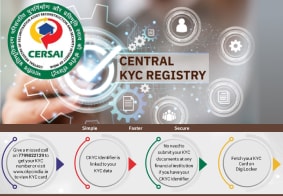CKYC Registry
-
Customer Service Contact us Service request Locate a branch
Find all the help you need
Scan the QR, get our app, and find help on your fingertips

Help CenterSupport topics, Contact us, FAQs and more
-
Login
Are you ready for an upgrade?
Login to the new experience with best features and services
-
Login
Are you ready for an upgrade?
Login to the new experience with best features and services
- Accounts
-
Deposits
IDFC FIRST Bank Deposits
View all Deposits -
Loans
IDFC FIRST Bank Loans
View all Loans - Wealth & Insure
-
Payments
IDFC FIRST Bank Payments
View all Payments -
Cards
IDFC FIRST Bank Cards
View all Cards - Blogs
- Corporate Account
-
Cash Management Services
IDFC FIRST Bank Cash Management Services
View all Cash Management Services - Supply Chain Finance
-
Corporate Lending
IDFC FIRST Bank Lending
View all -
Treasury
IDFC FIRST Bank Treasury
See more details - NBFC Financing
Support topics, Contact us, FAQs and more
- IDFC FIRST Bank Accounts
-
Savings Account
-
Corporate Salary
Account -
Senior Citizens
Savings Account -
First Power
Account -
Current Account
-
NRI Savings
Account -
TASC Institutional
Account -
Savings Account
Interest Calculator
- IDFC FIRST Bank Deposits
-
Fixed Deposit
-
Recurring Deposit
-
NRI Fixed Deposit
-
Safe Deposit Locker
-
FD Calculator
-
RD Calculator
- IDFC FIRST Bank Loans
-
Personal Loan
-
Consumer Durable
Loan -
Home Loan
-
Business Loan
-
Professional Loan
-
Education Loan
-
New Car Loan
-
Pre-owned Car Loan
-
Two Wheeler Loan
-
Pre-owned Two
Wheeler Loan -
Commercial Vehicle
Loan -
Gold Loan
-
Loan Against Property
-
Loan Against Securities
-
Easy Buy EMI card
-
Personal Loan
EMI Calculator -
Education Loan
EMI Calculator -
Home Loan
EMI Calculator
- IDFC FIRST Bank Wealth & Insure
-
FIRST Select
-
FIRST Wealth
-
FIRST Private
-
Mutual Funds
-
Sovereign Gold Bond
-
Demat Account
-
Term Insurance
-
Life Insurance
-
Health Insurance
-
General Insurance
-
Bonds
-
Loan Against
Securities -
Portfolio Management
Service
- IDFC FIRST Bank Payments
-
FASTag
-
Credit Card
Bill Payments -
UPI
-
Funds Transfer
-
Forex Services
-
Pay Loan EMI
- IDFC FIRST Bank Cards
-
Ashva :
Metal Credit Card -
Mayura :
Metal Credit Card -
FIRST Millennia
Credit Card -
FIRST Classic
Credit Card -
FIRST Select
Credit Card -
FIRST Wealth
Credit Card -
FIRST WOW!
Credit Card -
Deals
-
Debit Cards
-
Co-branded Cards
-
Credit Card
EMI Calculator -
FIRST Corporate
Credit Card -
FIRST Purchase
Credit Card -
FIRST Business
Credit Card
- Premium Metal Credit Cards
-
AshvaLifestyle1% Forex₹2,999
-
MayuraLifestyleZero Forex₹5,999
-
FIRST PrivateInvite Only
- Best for travellers
-
MayuraZero ForexMetal₹5,999
-
Ashva1% ForexMetal₹2,999
-
FIRST WOW!Zero ForexTravelLifetime Free
-
FIRST SWYPTravel OffersEMI₹499
-
FIRST Select1.99% ForexLifestyleLifetime Free
-
FIRST Wealth1.5% ForexLifestyleLifetime Free
-
Club VistaraTravelLifestyle₹4,999
-
IndiGo IDFC FIRST Dual Credit CardTravelLifestyle₹4,999
- Max benefits, Free for life
-
FIRST Classic10X RewardsShoppingNever Expiring Rewards
-
FIRST Millennia10X RewardsShoppingNever Expiring Rewards
-
FIRST Select10X RewardsLifestyle1.99% Forex
-
FIRST Wealth10X RewardsLifestyle1.5% Forex
-
FIRST WOW!RewardsTravelZero Forex
-
LIC ClassicRewardsInsuranceShopping
-
LIC SelectRewardsInsuranceShopping
- Reward Multipliers
-
AshvaLifestyleMetal₹2,999
-
MayuraLifestyleZero Forex₹5,999
-
FIRST ClassicNever Expiring RewardsShoppingLifetime Free
-
FIRST MillenniaNever Expiring RewardsShoppingLifetime Free
-
FIRST SelectNever Expiring RewardsLifestyleLifetime Free
-
FIRST WealthNever Expiring RewardsLifestyleLifetime Free
- Rewards & Credit on UPI
-
FIRST Power+FuelUPI₹499
-
FIRST PowerFuelUPI₹199
-
FIRST EA₹NVirtual1% Cashback₹499
-
FIRST DigitalVirtualUPI₹199
-
IndiGo IDFC FIRST Dual Credit CardUPITravelDual cards
- Fuel and Savings
-
FIRST PowerRewardsUPI₹199
-
FIRST Power+RewardsUPI₹499
-
LIC ClassicRewardsInsuranceShopping
-
LIC SelectRewardsInsuranceShopping
- Express and Flaunt
-
AshvaMetal1% Forex₹2,999
-
MayuraMetalZero Forex₹5,999
-
FIRST SWYPEMIOfferMAX₹499
-
FIRST MillenniaRewardsShoppingLifetime Free
- FD Backed rewarding Credit Cards for all
-
FIRST EA₹NVirtualCashback₹499
-
FIRST WOW!Zero ForexTravelLifetime Free
-
CreditPro Balance TransferTransfer & SaveReduce InterestPay Smartly
- IDFC FIRST Bank NRI Forex Solutions
-
Send money to India-Wire transfer
-
Send money to India-Digitally
-
Send money abroad
-
Max Returns FD (INR)
- IDFC FIRST Bank MSME Accounts
-
Platinum Current
Account -
Gold
Current Account -
Silver Plus
Current Account -
Merchant Multiplier
Account -
Agri Multiplier
Account -
TASC Institutional
Account -
Dynamic Current
Account -
World business
Account -
First Startup
Current Account
- IDFC FIRST Bank Business Loans
-
Business Loan
-
Professional Loan
-
Loan Against Property
-
Business Loan for Women
-
Working Capital Loan
-
Construction Equipment Loan
-
Machinery Loan
-
Healthcare Equipment Loan
- IDFC FIRST Bank Business Solutions
-
Payment Solutions
-
Tax Payments
-
Doorstep Banking
-
Point of Sale (POS)
-
Escrow Accounts
-
NACH
-
Payment Gateway
-
UPI
-
Virtual Accounts
-
As per amendment in the Income Tax Rules, PAN or Aadhaar are to be mandatorily quoted for cash deposit or withdrawal aggregating to Rupees twenty lakhs or more in a FY. Please update your PAN or Aadhaar. Kindly reach out to the Bank’s contact center on 1800 10 888 or visit the nearest IDFC FIRST Bank branch for further queries.
-
-
Most Searched
Sorry!
We couldn’t find ‘’ in our website
Here is what you can do :
- Try checking the spelling and search
- Search from below suggestions instead
- Widen your search & try a more generic keyword
Suggested
Get a Credit Card
Enjoy Zero Charges on All Commonly Used Savings Account Services
Open Account Now
Savings Account
What happens when you leave your savings account unused?
Key Takeaways
A savings account is essential for accessing other financial services, such as loans, insurance plans, EMIs, bill payments, digital wallets, and more.
RBI guidelines state that any savings account without any transactional activity in 24 months becomes inoperative, and you will have to file an application and submit KYC documents for reactivation.
Most savings accounts require a minimum balance, so leaving your account inactive could deplete your balance over time.
One of our initial steps in personal banking is setting up a new savings account. A good savings account lets you deposit money and grow your wealth over time. Moreover, it is essential for accessing other financial services, such as loans, insurance plans, EMIs, bill payments, digital wallets, and more. But all of these depend on how active your savings account is.
So, what happens when you have a long-forgotten savings account that you have not used in years? Whether you have had multiple salary accounts every time you switched a job or set up a new account with a lender that offered you better terms. While it’s a case of out of sight, out of mind, you might be thinking, an unused savings account would not impact you at all!
READ MORE
Why you should avoid keeping your savings account idle
Here are four reasons why it is not wise to keep your savings account idle:
1. It becomes inoperative after 24 months of inactivity
As per RBI guidelines, any savings account without any transactional activity in 24 months becomes inoperative. This means you cannot access your money, especially in times of need, without filing an application and submitting KYC documents for reactivation – something that can be a hassle. Furthermore, if the account remains dormant for 10 years, its balance and interest are transferred to the RBI’s Depositors' Education and Awareness Fund. Again, you will need to complete extensive documentation to recover these funds.
2. It will incur penalties
Most savings accounts require a minimum balance. Service charges, such as maintenance or card fees, may reduce your balance over time. Penalties are triggered once below the required limit, further depleting your funds.
3. Wasted investment opportunity
While leaving a certain amount unattended in your savings account for a while to earn interest is a good idea, you miss out on investing the same money in more lucrative options such as fixed deposits or mutual funds. Hence, keeping an inactive savings account with a lot of money is not the wisest investment choice.
4. You miss out on your savings account benefits
Your savings account is not merely a locker for depositing money. In many cases, it also offers special programmes, reward points and features like sweep-in fixed deposits that allow you to earn more income through transactional activity in your account. Surely, you don’t want to miss out on that!
How to deactivate a bank account
If you have an unused savings account and wish to close it to avoid penalties or complications, follow these steps:
1. Step 1 – Visit the bank branch
Go to the bank where the account is held. Make sure you carry your original identification documents, such as your Aadhaar, PAN card, and bank passbook.
2. Step 2 – Submit a written request
Fill out the account closure form provided by the bank. Mention your account details and reason for closure.
3. Step 3 – Clear pending dues
Ensure the account has no negative balance, unpaid charges, or pending transactions. The bank may ask you to clear these dues before proceeding.
4. Step 4 – Withdraw the remaining balance
Transfer or withdraw the remaining funds in the account. Banks may issue the balance through cash, cheque, or direct transfer to your preferred account.
5. Step 5 – Surrender related items
Return items such as the debit card, unused cheques, and passbook to the bank for cancellation.
6. Step 6 – Confirmation of closure
Once the bank processes the request, you will receive an email or written acknowledgement confirming account closure.
By deactivating an account you no longer use, you can avoid unnecessary fees and manage your finances more efficiently.
How to close a savings account online
Many banks offer online account closure options if you prefer managing your bank account closure digitally. Follow these steps to close your savings account online:
1. Step 1 – Log in to internet or mobile banking
Access your account through the bank’s official website or mobile app. Use your registered username and password.
2. Step 2 – Locate the account closure option
Navigate to the ‘Account Services’ or ‘Help Desk’ section, where you will find an option for account closure.
3. Step 3 – Fill out the Closure Request Form
Complete the online form with your account details, reason for closure, and preferred mode for receiving the remaining balance (e.g., transfer to another account).
4. Step 4 – Verify KYC details
Some banks may ask for digital verification of your identity via Aadhaar-based e-KYC or OTP authentication.
5. Step 5 – Settle pending dues
Before proceeding, ensure the account has no pending charges, EMIs, or negative balance.
6. Step 6 – Submit the request
Once you have completed all the steps, submit the closure request online. You will receive confirmation on the request via email or SMS.
7. Step 7 – Withdraw remaining funds
The bank will transfer the remaining balance to your linked account or as specified in your closure request.
By opting for online account closure, you save time and avoid the hassle of visiting a branch. However, ensure the bank offers this feature, as it may vary by institution.
How does opening a savings account online benefit the customer?
After understanding the steps to deactivate or close an unused savings account, it’s equally important to consider the benefits of maintaining an active one. Exploring options like opening a new, rewarding savings account– such as an IDFC FIRST Bank Savings Account with interest rate of up to 7.00% p.a.–can prove more advantageous. Opening a savings account online simplifies the process while offering significant benefits:
1. Convenience
Customers can open an account anytime, anywhere, through a paperless and digital process with video KYC.
2. High interest earnings
Options like the IDFC FIRST Bank Savings Account offer competitive interest rates of up to 7.00% p.a., with monthly interest credits to maximise your savings.
3. Cost-effective features
IDFC FIRST Bank offers free and unlimited ATM withdrawals, minimising transaction fees and providing easy access to funds.
4. Added perks
Online savings accounts often include benefits like free accident insurance coverage and exclusive rewards for account holders.
5. Low minimum balance
A manageable minimum monthly balance of either ₹10,000 or ₹25,000 ensures flexibility without compromising on account features.
Switching to an online savings account ensures you effortlessly earn, save, and enjoy banking benefits.
Conclusion
Leaving your savings account unused can lead to unnecessary penalties, missed opportunities, and a lot of hassle. By keeping your accounts active and managing them efficiently, you can enjoy the full range of benefits they offer. Whether it’s interest earnings, special rewards, or easy access to funds, a well-maintained savings account ensures your financial health stays on track.
Explore the rewarding features of IDFC FIRST Bank Savings Accounts today and take the first step toward smarter, hassle-free banking.
Disclaimer
The contents of this article/infographic/picture/video are meant solely for information purposes. The contents are generic in nature and for informational purposes only. It is not a substitute for specific advice in your own circumstances. The information is subject to updation, completion, revision, verification and amendment and the same may change materially. The information is not intended for distribution or use by any person in any jurisdiction where such distribution or use would be contrary to law or regulation or would subject IDFC FIRST Bank or its affiliates to any licensing or registration requirements. IDFC FIRST Bank shall not be responsible for any direct/indirect loss or liability incurred by the reader for taking any financial decisions based on the contents and information mentioned. Please consult your financial advisor before making any financial decision.
The features, benefits and offers mentioned in the article are applicable as on the day of publication of this blog and is subject to change without notice. The contents herein are also subject to other product specific terms and conditions and any third party terms and conditions, as applicable. Please refer our website www.idfcfirstbank.com for latest updates.

























